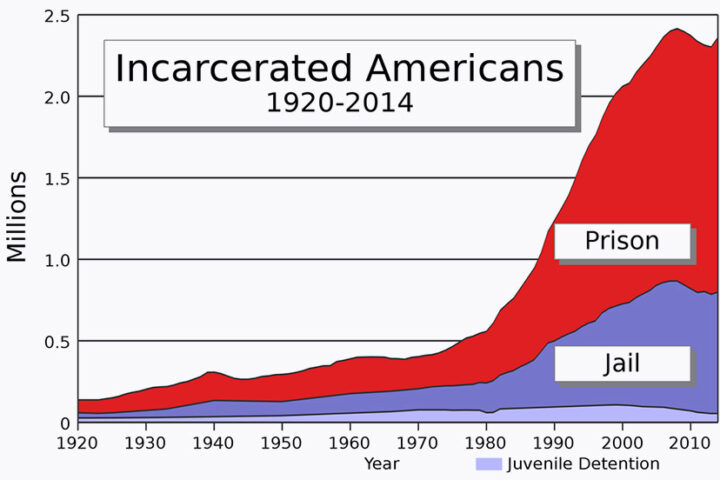My Colorado election ballot arrived in the mail last week, and an interesting document it is. 50 candidates and judges, running for various offices, and a dozen constitutional amendments and propositions.
And of course, Archuleta County’s proposed $6.5 million sales tax increase — Ballot Issue 1A — that appears at the bottom of the ballot, on the back side.
One of the more interesting ballot questions is Proposition 122… described in Colorado’s election ‘Blue Book’ this way:
Summary and Analysis for Proposition 122
What does the measure do?
This measure allows individuals aged 21 and older to use five specific types of natural psychedelic substances. Specifically, the measure covers two chemicals found in psychedelic mushrooms — psilocybin and psilocin — and three other plant-based psychedelic substances — ibogaine, mescaline, and dimethyltryptamine, also known as DMT.
Psychedelic substances can alter a person’s consciousness, mood, and awareness of their surroundings.
Personal use. Upon passage of the measure, psychedelic mushrooms and the other plant-based psychedelic substances will be decriminalized in state law, and individuals aged 21 and older will be able to grow, possess, share, and use them. Personal use does not allow for the sale of psychedelic mushrooms and other plant-based psychedelic substances.
Licensed facilities. The measure also requires the state to establish a regulated system for licensed facilities to offer supervised use of psychedelic mushrooms for individuals aged 21 and older, starting in 2024. Starting in 2026, the state may choose to expand the type of substances that may be used at these facilities to include additional plant-based psychedelic substances.
Plant-based consciousness-altering substances have been part of the human experience since forever… with alcohol — derived from grains, grapes, or other plants with high sugar content — being the most common in America.
Psychoactive substances exhibit a wide range of effects, in terms of user experiences and in terms of potential addiction and tendency to be ‘abused’.
A bit of U.S. history:
In what may have been a politically-motivated move aimed at disparaging the ‘youth culture’ of the 1960s and certain racial groups — especially Blacks — the U.S. Controlled Substances Act of 1970 established somewhat draconian federal drug policies, under which the manufacture, importation, possession, use, and distribution of certain substances was regulated. It was passed by the 91st United States Congress as Title II of the Comprehensive Drug Abuse Prevention and Control Act of 1970, and was signed into law by President Richard Nixon.
Many of the drugs earmarked as ‘dangerous’ were those popular among certain segments of American society. The drugs were classified according to five ‘schedules’, based on their alleged levels of danger to society.
Alcohol, perhaps the most abused plant-derived drug overall, was not among the drugs controlled.
Two federal agencies, the Drug Enforcement Administration and the Food and Drug Administration were authorized to determine which substances should be added to or removed from the various schedules, although the statute passed by Congress created the initial listing. Classification decisions are required to be made on criteria including potential for abuse… but the law was careful not to actually define the term ‘abuse’.
If we were prone to cynicism, we might be tempted to define the term ‘abuse’ as meaning ‘not a drug of choice for older white men.’ Some of the plant-based compounds listed by the DEA and the FDA as ‘dangerous’ are in fact much less dangerous than alcohol, and much less addictive than pharmaceutical opioids.
The CSA not only combined existing federal drug laws and expanded their scope, but it also changed the nature of federal drug law policies and significantly expanded federal law enforcement pertaining to controlled substances. While it was being drafted, the Uniform Controlled Substances Act — intended to be passed by state legislatures — was also being drafted by the Department of Justice; its wording closely mirrored the Controlled Substances Act.
The end results of this federal legislation, passed and signed in 1970, were rather remarkable. In 1970, the U.S. prison population numbered less than 200,000 individuals. Today, it is close to 1.5 million. A seven-fold increase. When you include the Americans who are incarcerated in local jails, the number is around 2.3 million.

Yet the rate of violent crime in the U.S. in 2016 (when this chart was created) was about the same as it was in 1971.
Here’s a quote from an article by Ruth Delaney, Ram Subramanian, Alison Shames, and Nicholas Turner on the Vera.org website:
In 1970, the era of mass incarceration began. This growth in the nation’s prison population was a deliberate policy. It was inflamed by campaign rhetoric that focused on an uptick in crime and orchestrated by people in power, including legislators who demanded stricter sentencing laws, state and local executives who ordered law enforcement officers to be tougher on crime, and prison administrators who were forced to house a growing population with limited resources…
Another result was a vast criminal network, producing and distributing the drugs that had been federally classified as ‘illegal’ and had thus become extremely profitable for those willing to flout the law.
Marijuana was the poster child for this disastrous federal policy. Non-addictive, easy to cultivate, harmless in terms of overdose risks, and yet millions of users — found possessing, in many cases, less than an ounce of the plant material — were incarcerated for decades. Their lives wrecked. Often, the damage extended to their spouses and children.
In the year 2000, the voters in Colorado determined that marijuana had medical properties related to pain relief and other conditions, and amended the state’s constitution to allow the cultivation and use of marijuana as a medicine. But recreational use remained illegal.
Twelve years later, Colorado voters again amended the constitution to allow recreational use of marijuana by adults 21 years and older. A thriving legal industry has since developed in Colorado, and in other states where recreational use of marijuana is permitted under state law. Those states include, as of 2022, California, Nevada, Arizona, New Mexico, Oregon, Washington, Montana, Illinois, Michigan, Virginia, New Jersey, New York, Connecticut, Rhode Island, Massachusetts, Vermont, Maine, and Alaska. In 19 more states, the medicinal use of marijuana is now legal or decriminalized.
Ten years later, has Colorado society fallen apart as a result? I haven’t come across any evidence that social harm has resulted from legalizing or decriminalizing marijuana in Colorado and other places.
Quite the opposite.

